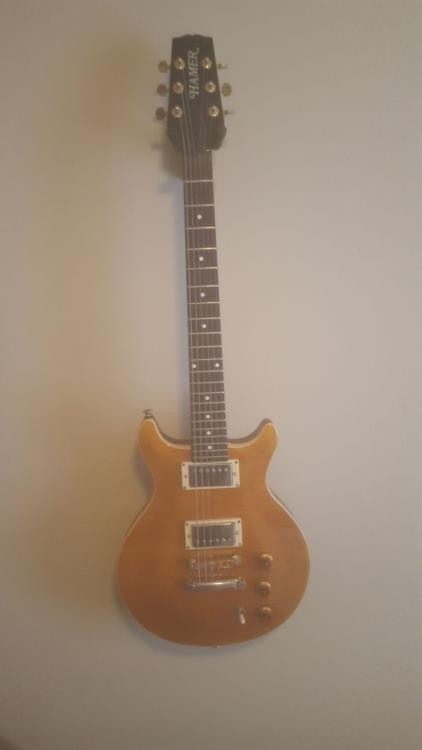Guitar serial numbers can be a fascinating, albeit sometimes cryptic, key to unlocking information about your instrument. Many guitar players are curious about determining the age, origin, and even model of their guitars using these unique identifiers. However, the world of Guitar By Serial Number decoding is not always straightforward, and sometimes, as with Korean-made guitars, the numbers might not reveal as much as you’d hope.
Often located on the headstock’s back, or sometimes inside the body or on the neck heel, a guitar serial number is intended to be a unique code assigned by the manufacturer. In theory, these numbers should allow you to trace your guitar back to its production date and batch. Major American guitar manufacturers like Fender and Gibson have well-documented serial number systems, allowing enthusiasts to date their instruments with reasonable accuracy. These systems often incorporate the year of manufacture directly into the number or use a coded system that can be deciphered.
 Close-up of a guitar headstock back showing a 'Made in Korea' sticker with serial number 9802407, used to identify guitar origin and manufacturing date.
Close-up of a guitar headstock back showing a 'Made in Korea' sticker with serial number 9802407, used to identify guitar origin and manufacturing date.
However, the consistency and informativeness of serial numbers vary greatly between manufacturers and countries of origin. When it comes to guitars made in Korea (MIK), the serial number system can be less standardized and harder to interpret. Unlike some American brands, Korean manufacturers, especially those producing guitars for various brands, might have used serial numbers primarily for internal inventory or production tracking rather than for detailed historical records accessible to the public.
This means that a serial number on a Korean-made guitar, like the “9802407” example, might not conform to the readily available dating charts associated with American-made counterparts. It could indicate a production date, but without access to the specific manufacturer’s internal records, it can be challenging, if not impossible, to decode the exact year of production based solely on the number. In some cases, these numbers might indeed be sequential but lack any embedded date information that is easily decipherable by guitar owners.
Furthermore, guitars produced in Korea and other countries as imports for larger brands sometimes feature components like unbranded tuners and pickups (such as Duncan Designed in the example mentioned). This was a common practice to manage costs and production for import models. While these guitars can be excellent instruments, their serial numbers might not adhere to the same detailed and publicly available systems as high-end, domestically produced models.
 Detailed view of a sunburst archtop guitar headstock, highlighting unbranded tuners and the typical location of serial numbers for guitar identification.
Detailed view of a sunburst archtop guitar headstock, highlighting unbranded tuners and the typical location of serial numbers for guitar identification.
Despite the potential mystery surrounding some guitar by serial number inquiries, especially with certain imports, it’s worth remembering that the most important aspect of any guitar is its playability and sound. A guitar that plays well and inspires you is valuable regardless of whether its serial number unlocks a detailed history. If you’ve acquired a guitar that you enjoy, like the MIK archtop mentioned, theSerialNumber might be less important than the music you create with it. While the quest to decode a serial number can be intriguing, sometimes the story of a guitar is best told through the music it makes, rather than the numbers on its headstock.
